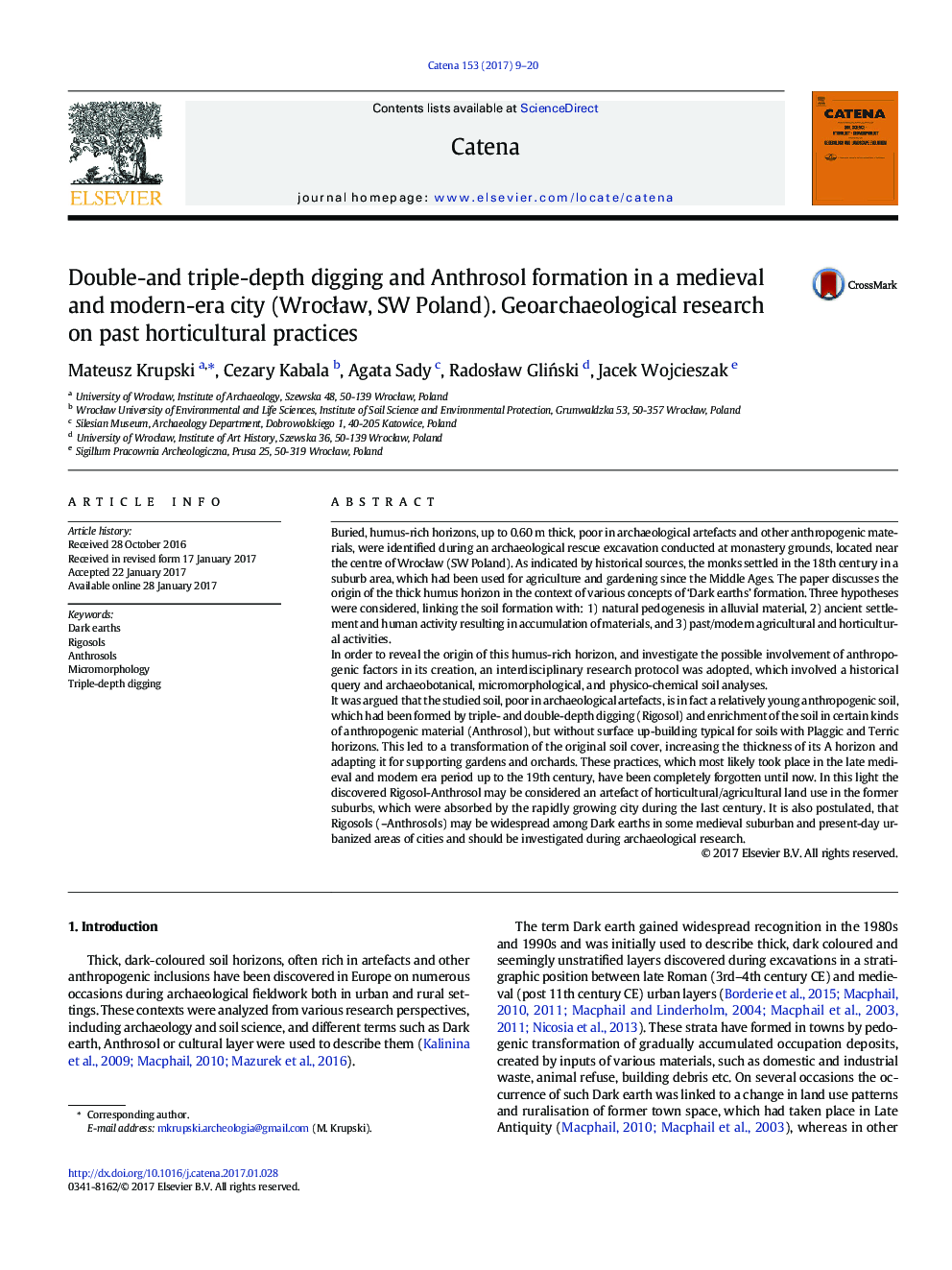| کد مقاله | کد نشریه | سال انتشار | مقاله انگلیسی | نسخه تمام متن |
|---|---|---|---|---|
| 5770144 | 1629201 | 2017 | 12 صفحه PDF | دانلود رایگان |

- Sub-fossil humus horizons up to 0.60Â m thick occur near the old-town in WrocÅaw.
- Humus layers are rich in phosphorus and meet all the criteria of Anthrosols.
- They developed as garden soils by double- or triple-depth digging/ploughing.
- Rigosols-Anthrosols may be widespread among Dark earths in contemporary urban areas.
Buried, humus-rich horizons, up to 0.60Â m thick, poor in archaeological artefacts and other anthropogenic materials, were identified during an archaeological rescue excavation conducted at monastery grounds, located near the centre of WrocÅaw (SW Poland). As indicated by historical sources, the monks settled in the 18th century in a suburb area, which had been used for agriculture and gardening since the Middle Ages. The paper discusses the origin of the thick humus horizon in the context of various concepts of 'Dark earths' formation. Three hypotheses were considered, linking the soil formation with: 1) natural pedogenesis in alluvial material, 2) ancient settlement and human activity resulting in accumulation of materials, and 3) past/modern agricultural and horticultural activities.In order to reveal the origin of this humus-rich horizon, and investigate the possible involvement of anthropogenic factors in its creation, an interdisciplinary research protocol was adopted, which involved a historical query and archaeobotanical, micromorphological, and physico-chemical soil analyses.It was argued that the studied soil, poor in archaeological artefacts, is in fact a relatively young anthropogenic soil, which had been formed by triple- and double-depth digging (Rigosol) and enrichment of the soil in certain kinds of anthropogenic material (Anthrosol), but without surface up-building typical for soils with Plaggic and Terric horizons. This led to a transformation of the original soil cover, increasing the thickness of its A horizon and adapting it for supporting gardens and orchards. These practices, which most likely took place in the late medieval and modern era period up to the 19th century, have been completely forgotten until now. In this light the discovered Rigosol-Anthrosol may be considered an artefact of horticultural/agricultural land use in the former suburbs, which were absorbed by the rapidly growing city during the last century. It is also postulated, that Rigosols (-Anthrosols) may be widespread among Dark earths in some medieval suburban and present-day urbanized areas of cities and should be investigated during archaeological research.
Journal: CATENA - Volume 153, June 2017, Pages 9-20